Photo

A friend wanted to know how to do grass, whipped this up super quick, decided to turn it into a tutorial!
If you would like to request a personal little tutorial for yourself, please consider taking a look at my Patreon!
59K notes
·
View notes
Text
How to make a character's death sadder
Don’t have them die of old age after a long, fulfilling life. Many people don’t even think of this as sad (note that this can still work if you have enough of the other factors).
Leave one of their major goals unfinished. The more enthusiastic they are about completing the goal, the sadder.
Give them strong relationships with other characters.
Make them fight against whatever is causing their death. Their ultimate loss is sadder if they struggle.
Kill them in the middle of their character arc.
Don’t describe their funeral in detail. Maybe it’s just me, but I find that long descriptions of funerals kill the sadness.
445K notes
·
View notes
Photo
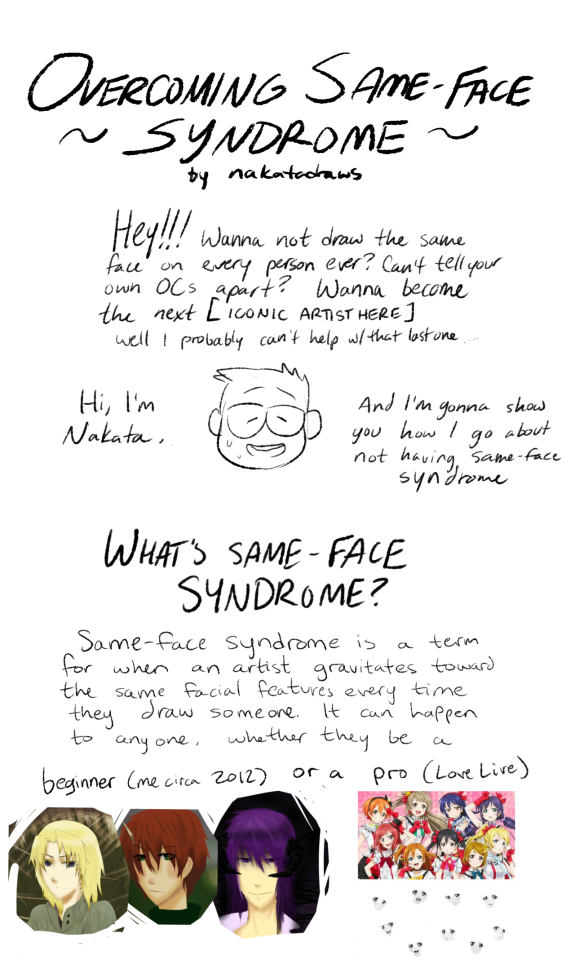







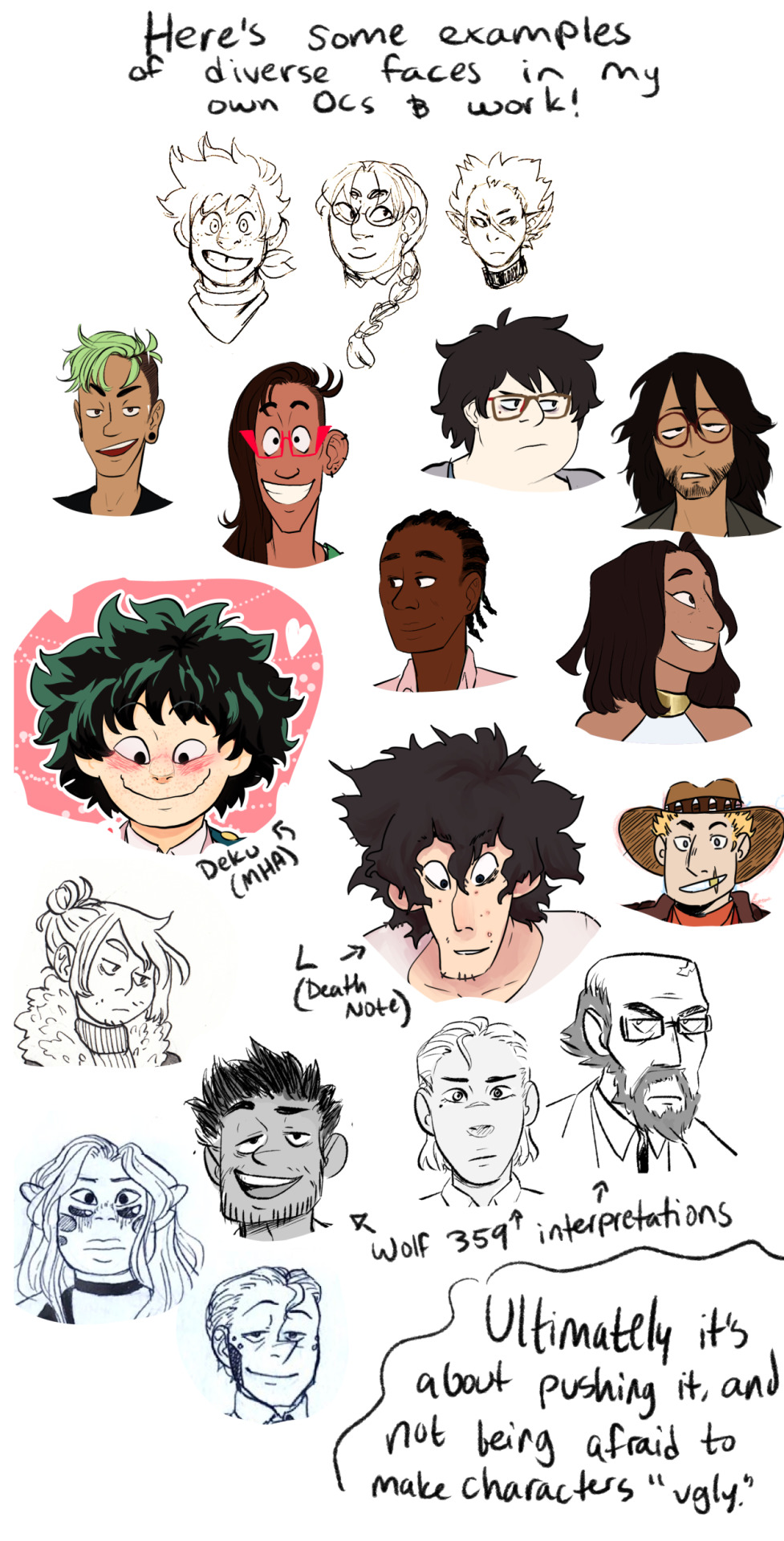

i didn’t mean to make this so long but i wanted to both analyze my own style and give other people a look into it! I hope someone can find some use for it!

53K notes
·
View notes
Photo


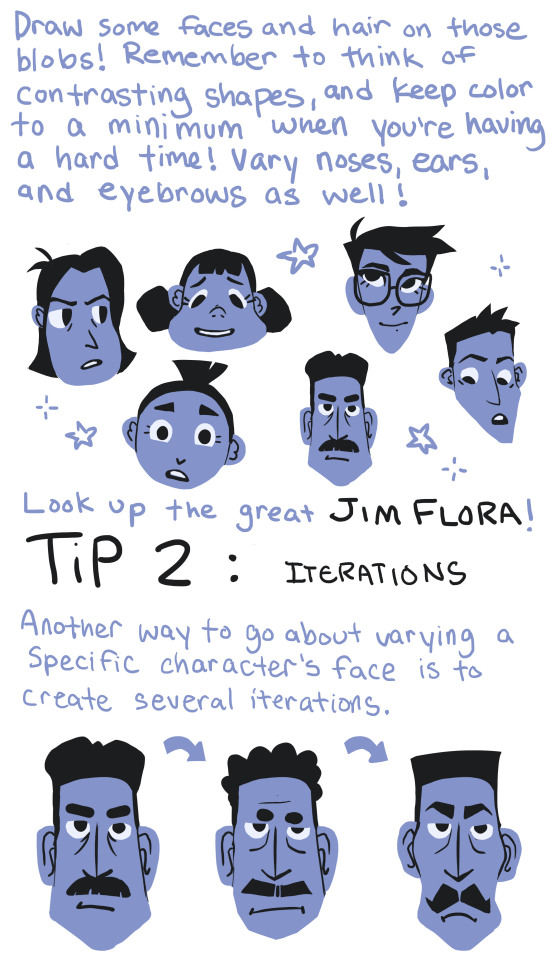

This is something I need to work on as well, so it was good practice for me! I hope this helps some of you that also struggle with same-face-syndrome!
TLDR: Just look at Jim Flora’s artwork and study from that ;)
43K notes
·
View notes
Photo
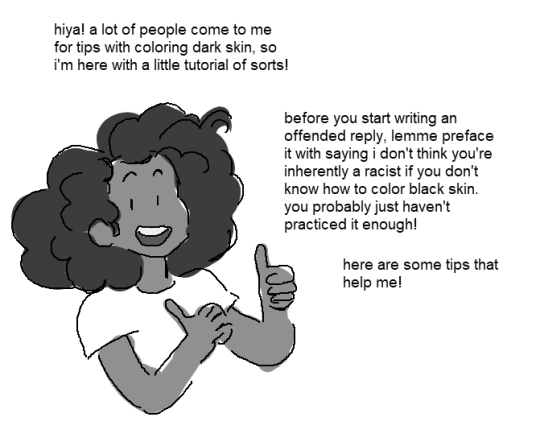
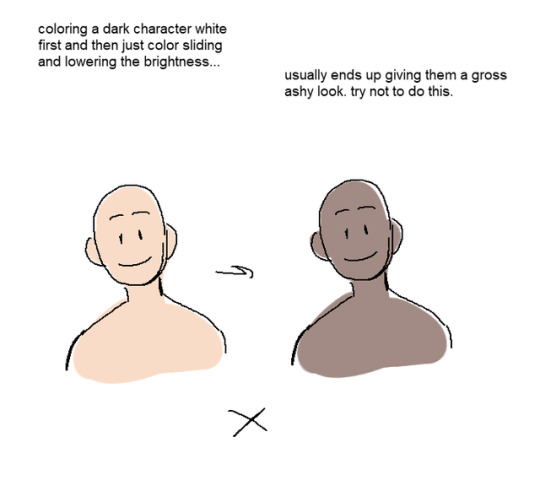

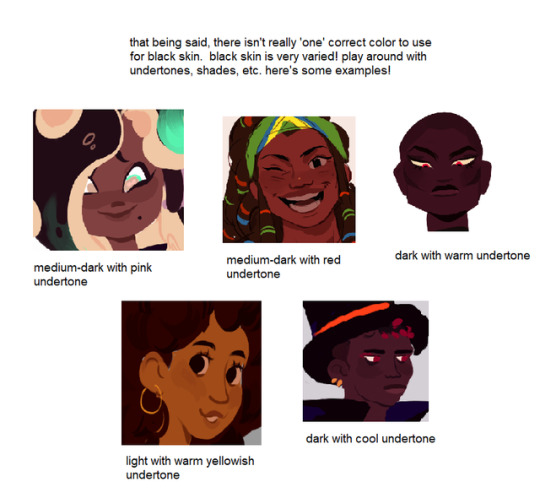

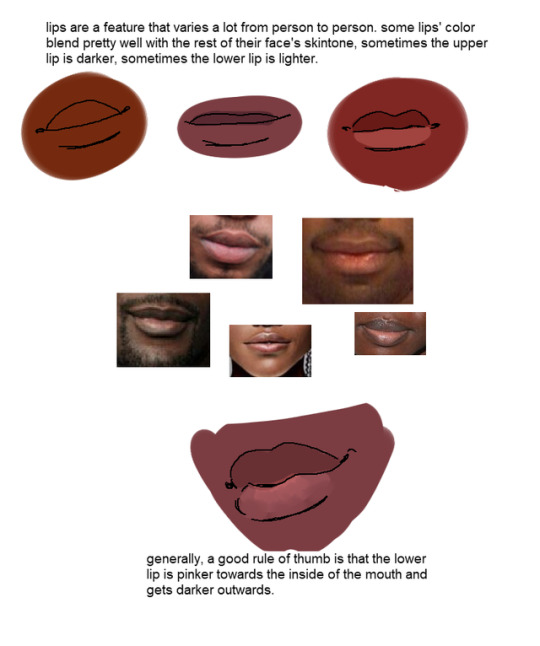
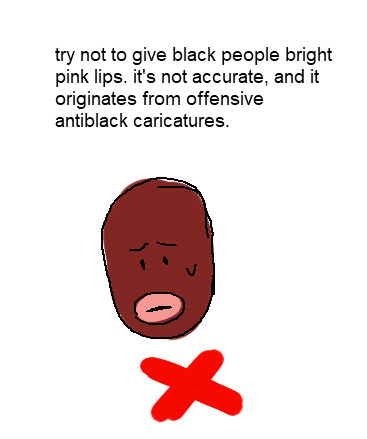
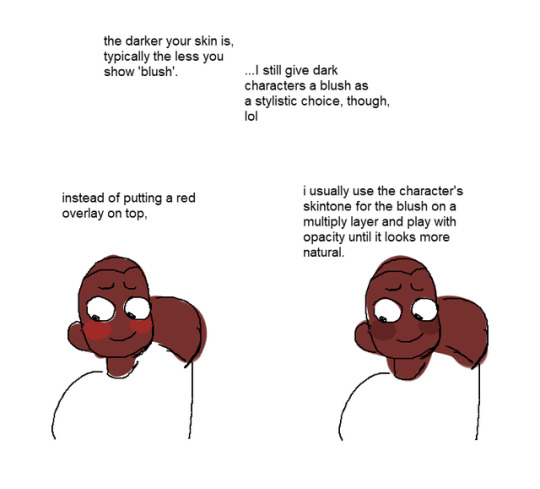
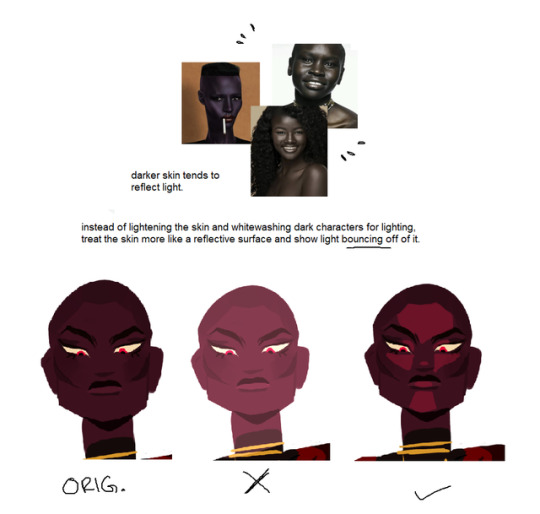


I get asked a lot for tips with coloring black people, so i put together a little tutorial! (and bumps my kofi if you found this helpful)
223K notes
·
View notes
Photo
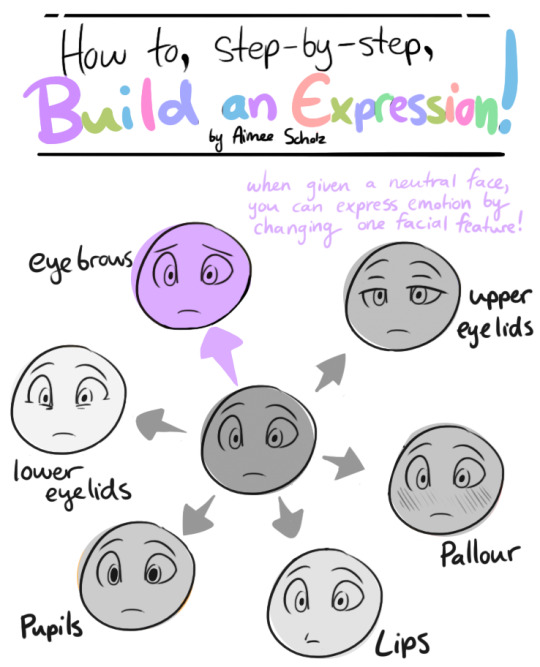
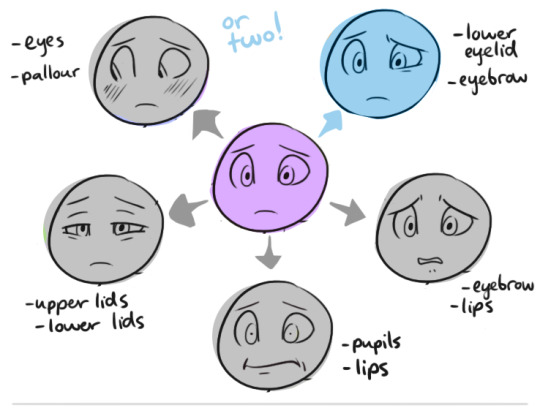
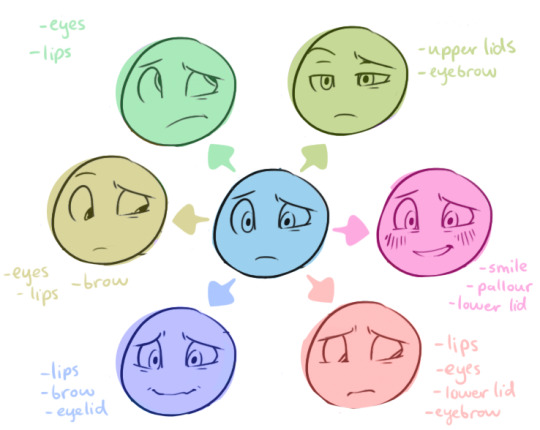
okay so my other post has gotten circled around from hell and back , but now I just want a better, cleaner version to get a chance to get around so HERE YA GO
37K notes
·
View notes
Photo
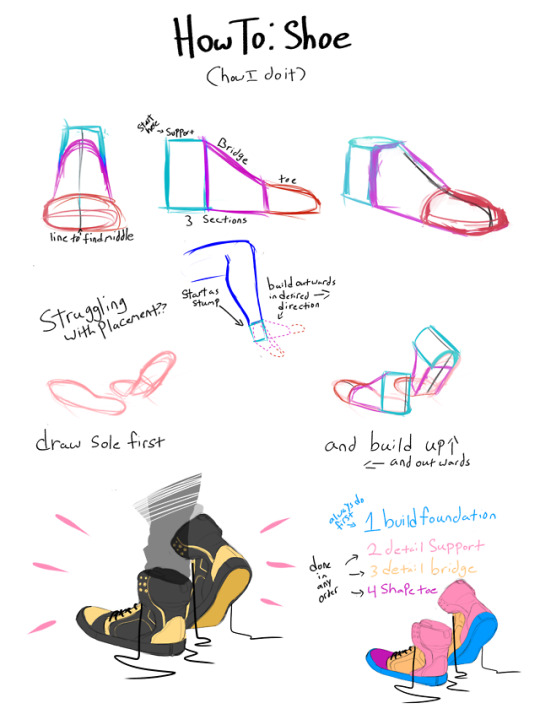
i had a poll on DA so i will be doing basic how to stuff of the results
43K notes
·
View notes
Note
OLA AMOKOMODIBUJAS AKSAJAS. <3 bendisionezchao.
i’m shook gracias amix...... se aprecia mucho 💖
0 notes
Note
can i use your art as an icon? (of course i'll leave credit)
yep! ^v^
0 notes
Photo

devirumannnnNNN
83 notes
·
View notes
Note
Do you take requests for anything? (meaning a fandom you're not in)
i don’t draw fanart stuff most of the time. i’m not really in a lot of fandoms, that’s the main reasonsoooo not really:( sorry pal
1 note
·
View note
Photo

did you break your leg suckin a dick :)
#mpgis#shay van buren#mpgis fanart#tmpgis#the most popular girls in school#most popular girls in school#shay mpgis#my art#aaaaa idk how to tag stuff x10000
740 notes
·
View notes
Photo


sasha calm down!! stress causes WRINKLES!!!
118 notes
·
View notes
Photo

young, scrappy & also hungry.
#hamilton#alexander hamilton#lin-manuel miranda#hamilton: an american musical#hamilton fanart#my shot#hamilton act 1
47 notes
·
View notes
Text
Webcomic tips
In the conclusion for now, some things I’d really recommend doing if you’re seriously considering making a webcomic (or really a comic in general). Some of these don’t really apply to strips or gag-a-day type of comics, but I’m not talking about those here.
1. Write down ideas\sketch stuff, LEGIBLY. “I’m gonna remember it later” NEVER works. And if you scribble it somewhere on a piece of paper, you’d better scan it or retype in one doc later, because tiny notes always get lost among other doodles in my skethbooks.

(i know it’s hard to keep everything clean and organized, but this mess is just not productive)
If your project is a collaboration, save your conversations. If you’re working alone, make a blog for your ramblings. You have no clue what tears of relief I cry when I open that blog and rememeber I don’t have to painstakingly look through my heaps of sketchbooks and folders for a tiny idea I’m not even sure I wrote down a few months ago.
2. Inspiration folders, or even better, inspo blog with tags also help with collecting and remembering ideas. Color schemes, landscapes, style inspirations, atmospheric stuff, maybe some photo references, all those neat things.

3. Basic tier: character design sheets. Top tier: common poses, expressions. God tier: outfits they wear throughout the comic. Holy cow tier: turnaround sheets for all those outfits.

(I’d die trying to find good pages for references without these)
4. If you haven’t finished detailing the plot, don’t even think about moving on to drawing the comic. You’re gonna regret it when you come up with a really cool plot element that can’t be incorporated anymore because you’ve already drawn all the parts you could’ve tweaked.
5. Don’t just define the plot, make a script. Writing down the lines and the brief description of the actions serves me fine:
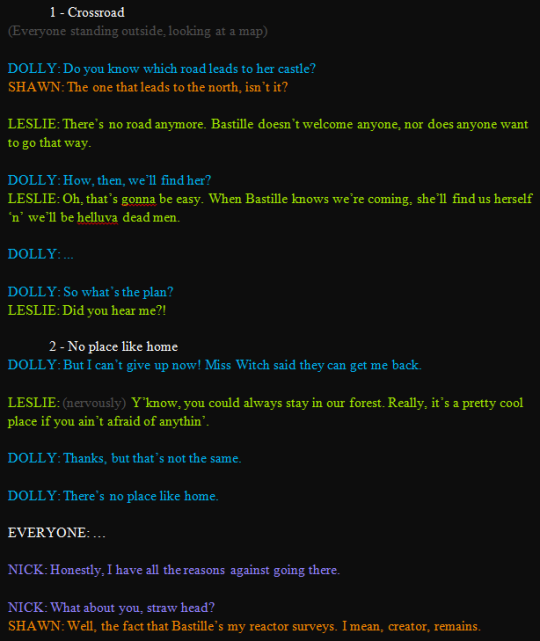
(notice that I approximately divided the pages & the text that’d go to each panel on a page)
6. Hard mode: make thumbnails for all the pages, if possible. At least whenever a new chapter starts.
7. If your story involves some convoluted chronology shenanigans, you’d better write down the events of your timeline in the chronological order.
8. Backgrounds. You can’t avoid them, bro. Like half of the comics are backgrounds, especially if your story involves a lot of adventuring and looking around. I know it hurts, but you’ll have to become friends with them. Read some tutorials, practice on photos, go out and sketch some streets, use 3d programs (like Google Sketch) to understand the perspective, use sites like houseplans to visualize your buildings better, I don’t know. Just be prepared for their imminent evil.
9. If you’re drawing digitally, pick a brush size for the lines and stick with it. You don’t want your lines and detail levels to look all wonky and inconsistent in different panels. And I don’t mean the cool stylistic varying lines, I mean this:
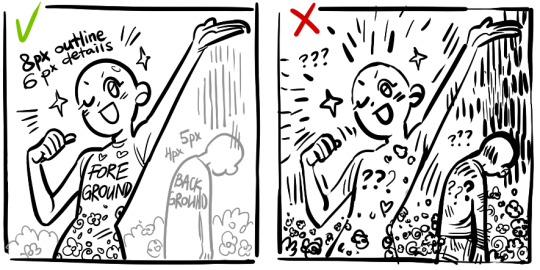
Also, things on the background should have thinner and/or lighter lines to avoid distraction. Usually less details too, unless you’re making a busy background with a simple foreground to help it pop out. Or wanna draw the attention to an object on the bg.
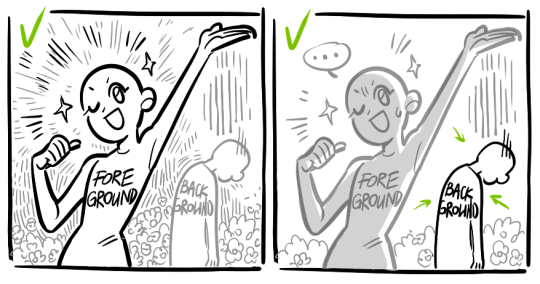
10. Readable fonts. Even if you chose to ignore people with poor sight or dyslexia, the majority of your readers aren’t gonna be excited about struggling to decypher this:
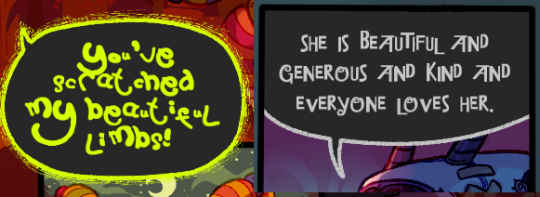
Also, as much as I love my black speech bubbles, colorful text on black still kinda hurts the eyes. I wouldn’t recommend doing that for all the characters. Black speech bubbles are usually used for creepy, inhuman voices. And yes, having a colorful outline in this case helps.
11. Probably newsflash, but did you know that panels have their place, order and functions? They do! My favourite thing ever is how I used panels when I was like 12:
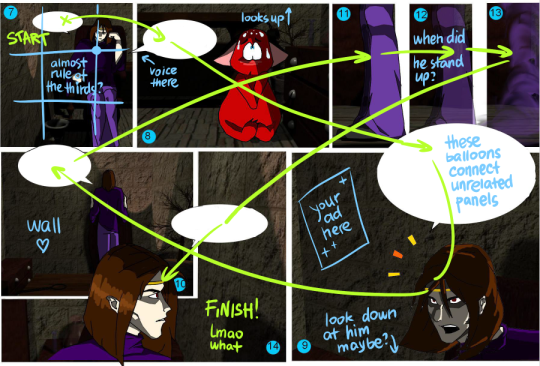
(comics ain’t rocket science, but this one is)
The composition of the panels and word balloons always serve for a better reading experience. They guide your eyes over the page, so that you never feel lost or confused. The images in the comic equal frames in a movie, so it’s pretty damn important in what order you look at things and how quickly you can understand what’s going on!
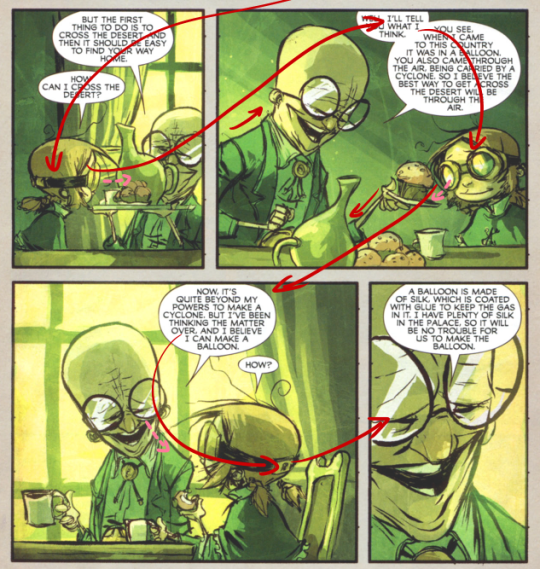
(Eric Shanower & Scottie Young’s Wizard of Oz)
12. One update a week is fine for testing waters. Don’t overestimate yourself, especially if you have a pretty busy life outside it. A stable comic that updates slowly, but regularly is better than an unpredictable erratic one. You can always pick up the pace later, if you feel confident enough.
13. Try to always have a buffer - a couple of pages in reserve. If you’re making the pages much faster than you’re updating, this shouldn’t be a problem. But if those paces are equally the same, it’s goddamn HARD. But on the other hand, if something happens and you skip an update, those come in handy.
If you’re looking at this list and thinking “wow that’s a LOT of work”, you’re totally right. And it’s okay to be intimidated at first! But that’s why it’s important to start with something small. Once you get the formula down, these things will be natural to you.
48K notes
·
View notes
Photo

a wild beast
95 notes
·
View notes
Photo

i wanted to draw something related to heathers so here
#my art#heathers the musical#jd#jason dean#jd heathers#freeze your brain#i never know how to tag these ugh
48 notes
·
View notes